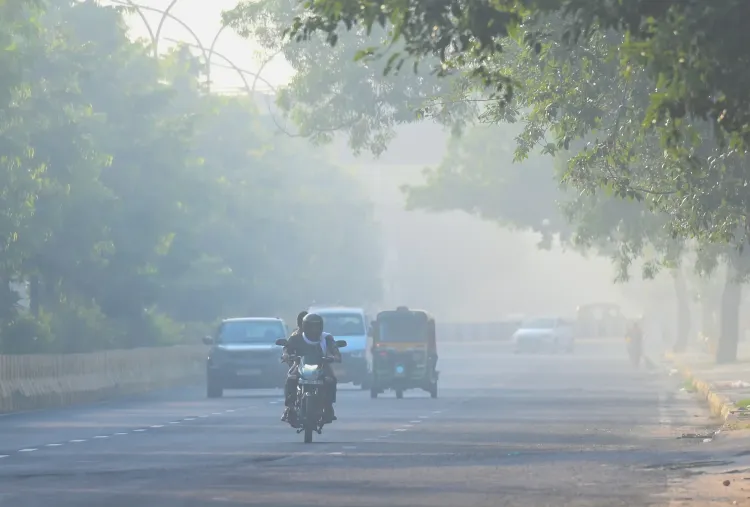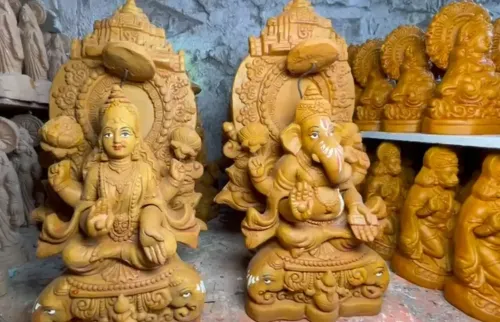Is Air Pollution Reaching Dangerous Levels in Delhi-NCR Before Diwali?

Synopsis
Key Takeaways
- Air pollution in Delhi-NCR is currently categorized as 'very poor'.
- High AQI levels indicate serious health risks for vulnerable populations.
- Authorities are implementing the Graded Response Action Plan to address the issue.
- Residents must take precautions, including wearing masks and using air purifiers.
- Weather conditions are exacerbating pollution levels in the region.
New Delhi, Oct 16 (NationPress) Air pollution in the Delhi-NCR region has escalated to the ‘very poor’ category, raising alarming public health concerns just ahead of the Diwali celebrations.
On Thursday morning, recorded data revealed that air quality has significantly worsened across various locations in Delhi, Ghaziabad, and Noida, even surpassing some of the previously identified most polluted zones.
The Air Quality Index (AQI) in numerous neighborhoods has exceeded the 300 threshold, categorizing them as “very poor.” An AQI ranging from 301 to 400 is classified as very poor.
In Ghaziabad, the area of Loni reported an AQI of 339, the highest in the region. Other localities such as Vasundhara and Indirapuram logged AQIs of 287, while Sanjay Nagar recorded 260.
Meanwhile, Noida is facing a similarly dire situation. Sector 125 posted an AQI of 358, Sector 116 had 334, Sector 1 was at 257, and Sector 62 noted 207.
Delhi continues to struggle with severe pollution, with Anand Vihar registering an AQI of 335, Wazirpur 337, Bawana 281, and Mundka 297—all falling within the “poor” to “very poor” spectrum.
Although some areas of the capital exhibited slightly improved air quality, the overall scenario remains bleak throughout the NCR.
In light of this deteriorating air quality, authorities have activated the initial phase of the Graded Response Action Plan (GRAP), enforcing measures such as halting construction activities and prohibiting the use of diesel generators.
Officials have cautioned that should pollution levels continue to escalate, the second phase of GRAP, which imposes even stricter regulations, could be implemented shortly.
Experts have pinpointed the surge in pollution to high levels of ozone and PM10, both identified as significant pollutants this month. Weather conditions such as low wind speeds and temperature inversions hinder the dispersion of these pollutants.
Health specialists have issued a warning, emphasizing that air quality categorized as “very poor” can pose serious health risks, particularly for children, the elderly, and individuals with respiratory or cardiac conditions.
Residents are advised to limit outdoor activities, wear protective masks, and utilize air purifiers indoors.
With Diwali approaching in just a few days, the hazardous air quality has raised concerns among the populace.
Authorities are urging residents to adhere strictly to pollution-control protocols and governmental advisories to manage the escalating pollution levels in the city.









